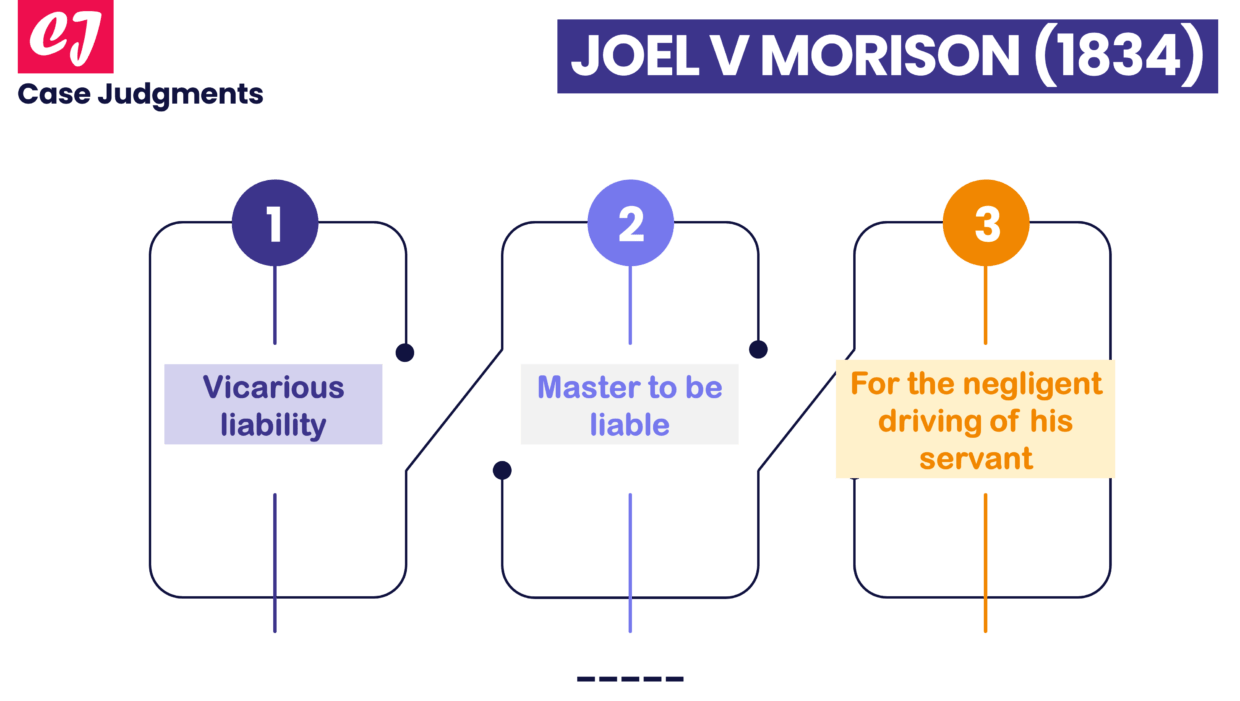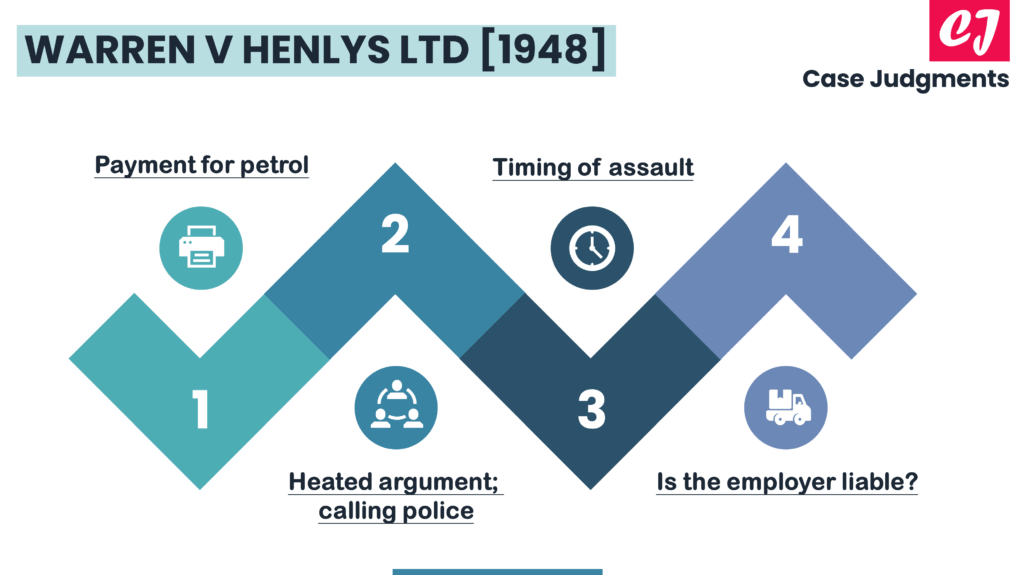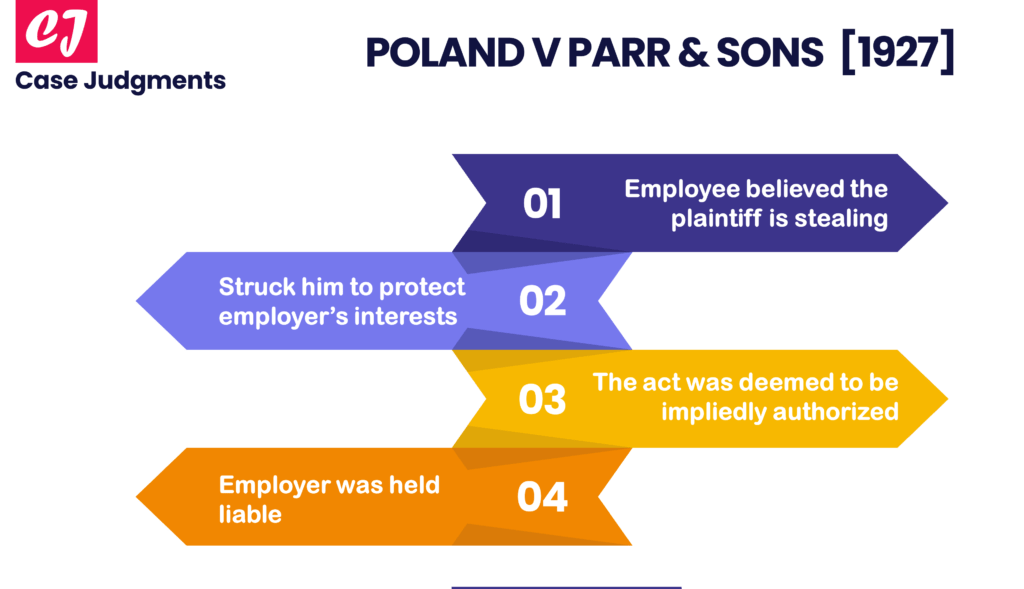
Joel v Morison (1834): A Case Summary
Case name & citation: Joel v Morison (1834) 6 C & P 501; [1834] EWHC KB J39; (1834) 172 ER 1338
Court and jurisdiction: High Court, England and Wales
Decided on: 03 July 1834
Area of law: Vicarious liability; negligence of a servant while on duty
What does the case deal with?
Joel v Morison (1834) is one of the earliest tort law cases on vicarious liability. It established very early on that a servant who goes on a “frolic of their own” is not acting in the course of their employment and therefore cannot hold the master liable for any torts that they commit.
Facts of the case (Joel v Morison)
The plaintiff was walking on foot across a certain public and common highway at the time of the incident. The defendant was in possession of a cart and horse, which were being driven along the said highway by a servant of his, who had the charge of their care, management and direction. The servant was driving the cart in a careless, improper, and negligent manner when he struck the plaintiff whilst he was taking a diversion from the task that his master had sent him for. The plaintiff was thrown to the ground, and the bone in one of his legs was fractured. And as a result, he became ill, was unable to conduct business, and was needed to incur a great deal of medical expense, as well as a further great deal of expense in retaining and employing individuals to supervise and manage his business for six calendar months.
As a consequence, the plaintiff filed a claim for compensation against the defendant.
Issue raised
Is it possible for a master to be held liable for damages caused by the negligent driving of a servant?
Judgment of the Court in Joel v Morison
The Court decided that the master was liable for the negligence of his servant. The servant decided to take a detour, while still being on his master’s business.
Parke B stated as follows:
“The master is only liable where the servant is acting in the course of his employment. If he was going out of his way, against his master’s implied commands, when driving on his master’s business, he will make his master liable; but if he was going on a frolic of his own, without being at all on his master’s business, the master will not be liable.”
Another case
The Courts have taken a differing view in certain cases. For instance, the case of Storey v Ashton (1869) LR 4 QB 476 in which the court determined that the deviation constituted an entirely new and independent journey, is a good example.
Here, a driver who delivered goods as instructed, but instead of returning directly to his employer’s premises, drove in a different direction to visit the home of a colleague’s relative on personal business, was deemed to be acting outside the scope of his employment for the purposes of an action brought against his employer by a pedestrian injured during the course of that diversion. The employer was not held responsible for the negligence of his employee.
As a result, it may be seen from the cases that have been decided that the degree of diversion to be permitted by the courts cannot be determined with absolute certainty. There is no hard and fast rule. Instead, the outcome in a given case will largely depend on the specific facts of that case and the judge’s perception of what justice requires.
List of references:
- https://shura.shu.ac.uk/21451/1/White_2017_LLB_CriticalAnalysisOf.pdf
- https://www.lawteacher.net/cases/joel-v-morison.php
- https://core.ac.uk/download/pdf/37899863.pdf
You might also like:
More from tort law:
- Lloyd v Grace, Smith & Co [1912]: A Summary
- Century Insurance v Northern Ireland Road Transport Board [1942]
- A Summary of Smith v Stages [1989] Case
Hope you found this blog helpful!


Excellent very helpful
Thanks. Glad it was of help!